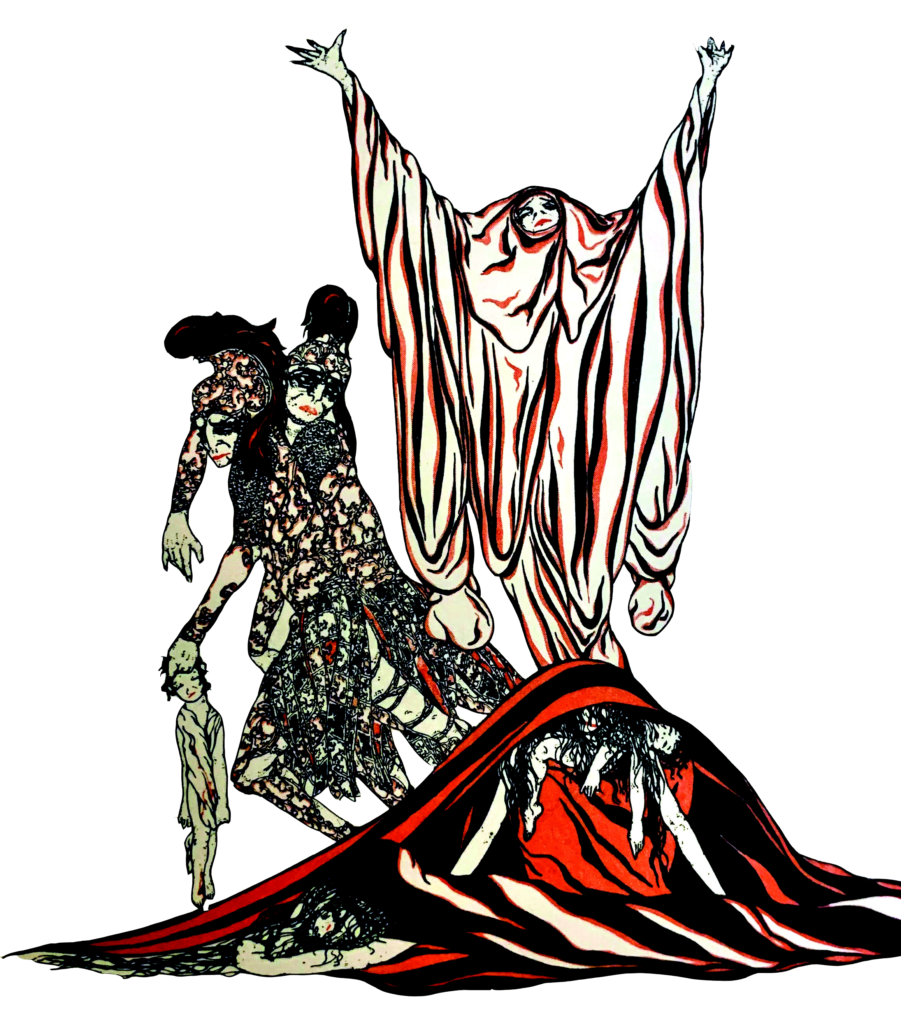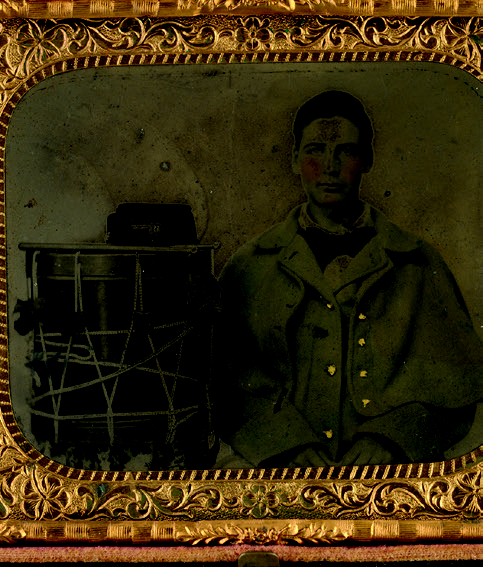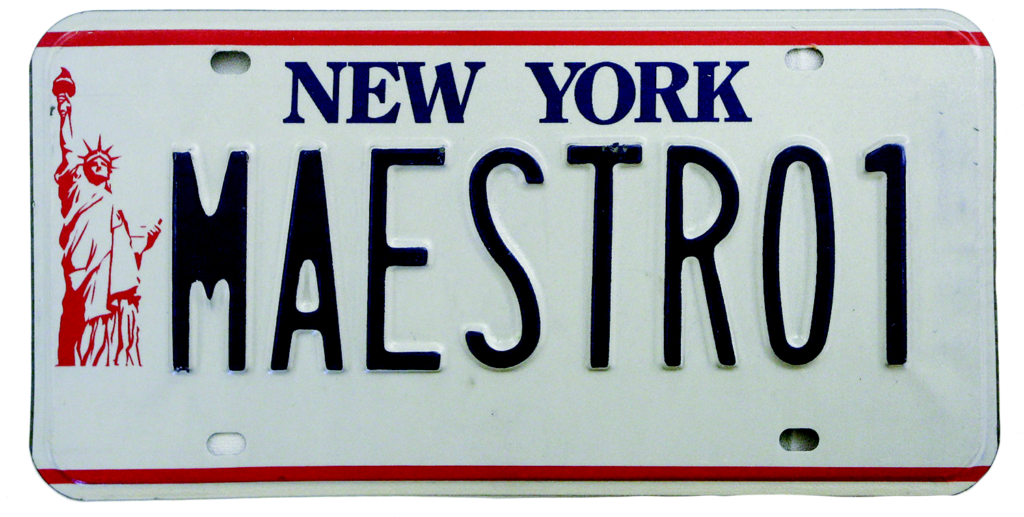LCM
LIBRARY OF CONGRESS MAGAZINE
JULY/AUGUST 2022
library
of the
unexpected
Inside
Hair, There
And Everywhere
The Man Behind
History’s First Selfie
Plus
Jazz Age Beauties
In History’s Hands
Drafting The Declaration
features
6
14
20
6
14
20
Jazz Age Beauties
Unexpected Wonders
History’s First Selfie
The dazzling portraits of Alfred Cheney Johnston capture a long-ago era.
The Library preserves a wealth of delightfully offbeat items.
A new collection sheds light on a pioneering photographer.
Printers used these brass dies, which include depictions of a sunrise and the planet Earth among clouds, to create the 1860 edition of Walt Whitman’s “Leaves of Grass.” Prints and Photographs Division
LIBRARY OF CONGRESS MAGAZINE
LCM
LIBRARY OF CONGRESS MAGAZINE
On the cover: NASA produced this gold-plated copper disc, titled “The Sounds of Earth,” in 1977 to accompany the Voyager interstellar spacecraft. The disc contains a selection of sounds and images intended to portray the diversity of life and culture on Earth. National Audio-Visual Conservation Center
departments
2 Trending
4 Off the Shelf
5 Online Offerings
8 Curator’s Picks
10 Page from the Past
24 My Job
25 News Briefs
26 Shop the Library
27 Support the Library
28 Last Word
JULY / AUGUST 2022
VOL. 11 NO. 4
Mission of the
Library of Congress
The Library’s mission is to engage, inspire and inform Congress and the American people with a universal and enduring source of knowledge and creativity.
Library of Congress Magazine is issued bimonthly by the Office of Communications of the Library of Congress and distributed free of charge to publicly supported libraries and research institutions, donors, academic libraries, learned societies and allied organizations in the United States. Research institutions and educational organizations in other countries may arrange to receive Library of Congress Magazine on an exchange basis by applying in writing to the Library’s Director for Acquisitions and Bibliographic Access, 101 Independence Ave. S.E., Washington DC 20540- 4100. LCM is also available on the web at loc.gov/lcm/. All other correspondence should be addressed to the Office of Communications, Library of Congress, 101 Independence Ave. S.E., Washington DC 20540-1610.
news@loc.gov
loc.gov/lcm
ISSN 2169-0855 (print)
ISSN 2169-0863 (online)
Carla Hayden
Librarian of Congress
April Slayton
Executive Editor
Mark Hartsell
Editor
Ashley Jones
Designer
Shawn Miller
Photo Editor
Contributors
Carol Lynn Ward Bamford
Maya Cade
Rachel Gordon
Wendi A. Maloney
Neely Tucker
Rachel Wetzel
JULY / AUGUST 2022
VOL. 11 NO. 4
Mission of the
Library of Congress
The Library’s mission is to engage, inspire and inform Congress and the American people with a universal and enduring source of knowledge and creativity.
Library of Congress Magazine is issued bimonthly by the Office of Communications of the Library of Congress and distributed free of charge to publicly supported libraries and research institutions, donors, academic libraries, learned societies and allied organizations in the United States. Research institutions and educational organizations in other countries may arrange to receive Library of Congress Magazine on an exchange basis by applying in writing to the Library’s Director for Acquisitions and Bibliographic Access, 101 Independence Ave. S.E., Washington DC 20540- 4100. LCM is also available on the web at loc.gov/lcm/. All other correspondence should be addressed to the Office of Communications, Library of Congress, 101 Independence Ave. S.E., Washington DC 20540-1610.
news@loc.gov
loc.gov/lcm
ISSN 2169-0855 (print)
ISSN 2169-0863 (online)
Carla Hayden
Librarian of Congress
April Slayton
Executive Editor
Mark Hartsell
Editor
Ashley Jones
Designer
Shawn Miller
Photo Editor
Contributors
Carol Lynn Ward Bamford
Maya Cade
Rachel Gordon
Wendi A. Maloney
Neely Tucker
Rachel Wetzel
2
4
5
8
10
24
25
26
27
28
Trending
Off the Shelf
Online Offerings
Curator’s Picks
Page from the Past
My Job
News Briefs
Shop the Library
Support the Library
Last Word
connect on
loc.gov/connect




JULY/AUGUST 2022 LOC.GOV/LCM
1
OFF THE SHELF

▪ The Brownies’ Book offered a mix of stories, advice, information and correspondence addressing the interests of African American children. Rare Book and Special Collections Division
2 LIBRARY OF CONGRESS MAGAZINE
brownies' book
Du Bois’ magazine aimed to reinforce pride in Black youth.
In 2022, the movement for diversity and representation in children’s literature has ensured that more children can see themselves in books and learn about others’ lives, too. A century ago, things were very different.
Writer, scholar and activist W.E.B. Du Bois recognized the need for young African Americans to see themselves and their concerns reflected in print. The Brownies’ Book, a monthly magazine for the “Children of the Sun … designed for all children, but especially for ours,” was his response.
Du Bois aimed to instill and reinforce pride in Black youth and to help Black families as they raised children in a segregated and prejudiced world.
The Brownies’ Book offered a groundbreaking mix of stories, advice, information and correspondence with the paramount goal of empowering Black children and validating their interests. Content included African folk tales, stories and poems about the origin of different races and messages about self respect and pride in one’s appearance.
After just two years, financial problems ended publication of The Brownies’ Book. Today, some of the language and attitudes seem old-fashioned, and there’s some difficult content. Still, they deliver real insight into the lives and concerns of Black children a hundred years ago.
With the publication of the magazine, Du Bois aimed to create “a thing of Joy and Beauty” — or, as he put it in the dedication of the first issue in January 1920:
“To Children, who with eager look Scanned vainly library shelf and nook, For History or Song or Story That told of Colored People’s glory, We dedicate THE BROWNIES’ BOOK.”
—Rachel Gordon is an educational programs
specialist in the Informal Learning Office.
MORE INFORMATION
The Brownies’ Book
go.usa.gov/xzkjJ
ONLINE OFFERINGS
FROM THE VAULTS
New series explores stories behind volumes in the Rare Book division.
The shelves of the Rare Book and Special Collections Division are filled with volumes whose stories are waiting to be told. How literary giants Walt Whitman and Henry David Thoreau once took a walk together in Brooklyn and exchanged books — volumes that, decades later, were
reunited in Library of Congress collections.
How an heir to the fortune of financier J.P. Morgan — disillusioned by his experiences in World War I — married a divorcee, moved to Paris to write poetry, lived a dissolute life, founded a publishing house, produced exquisite volumes of works by great authors, then died at age 31 in a murder-suicide pact with one of his mistresses.
A new virtual series, From the Vaults, tells those stories and more. The series is available on the Library’s website and on its YouTube channel.
From the Vaults features staff members from the Rare Book division exploring the fascinating history of items from the division’s collections: the Dunlap Broadside,
the first printing of the Declaration of Independence; mysterious volumes once owned by illusionist Harry Houdini; books from the Black Sun Press founded by
Morgan heir Harry Crosby and his wife, Caresse; and Thomas Jefferson’s own copy of The Federalist Papers.
The Federalist Papers is a collection of 85 essays written
under a pseudonym by John Jay, James Madison and Alexander Hamilton in support of ratification of the U.S. Constitution — today, considered a supreme contribution
to American political thought.
Speculating about the authorship of each essay became something of a parlor game in political circles: Was it Jay, Madison or Hamilton? Jefferson rarely wrote in his
books, but here he made an exception: On the flyleaf of his copy, he listed his own guesses of each essay’s author. The division also holds Madison’s copy, and in it he likewise indicated authorship of each work. The two lists don’t agree

and, 234 years later, the authorship of some essays remains uncertain.
But that is part of the intrigue of From the Vaults: mysteries never solved, hidden stories brought to light, the discovery of pieces of history that shaped our world.
—Mark Hartsell

MORE INFORMATION
From the Vaults
go.usa.gov/xzXNG
JULY/AUGUST 2022 LOC.GOV/LCM
3
LIBRARY
OF THE
UNEXPECTED
4 LIBRARY OF CONGRESS MAGAZINE
Our collections hold a
wealth of delightfully
offbeat items.
by neely tucker
▪ Library collections preserve these relics from the 1918 influenza pandemic.
JULY/AUGUST 2022 LOC.GOV/LCM 5




▪ Carl Sagan plotted out the film “Contact” on this whiteboard (clockwise from top); Dimitri Tiomkin won this best song Oscar for “High Noon”; conductor Leonard Bernstein put this license plate on his Ferrari; and Sigmund Freud once owned this ancient Greek bust. Manuscript Division, Music Division
When a Library collects more than 171 million objects over the course of a couple of centuries, odds are that some unusual items will filter into the mix. Along with traditional library fare such as books, maps, manuscripts, magazines, prints, photographs, movies and recordings, the Library has … other things.
Like a piece of the World Trade Center and a piece of cake from Gen. Tom Thumb’s wedding 159 years ago. We have the whiteboard upon which astronomer Carl Sagan sketched out the plot to the movie
“Contact” and the megaphone used by filmmaker Rouben Mamoulian to shout directions to his actors. Here’s a set of dessert plates hand-decorated by Rudyard Kipling, and there’s a map of the Grand Canyon made entirely of chocolate. We have Walt Whitman’s walking stick and Charles Dickens’ traveling cutlery kit — a folding spoon, knife and corkscrew in an ivory case bearing his initials. Burl Ives’ custom-made guitar, anyone? A thousandyear- old Mayan container shaped like a flying bat? How about an Oscar for “High
6 LIBRARY OF CONGRESS MAGAZINE
Noon” or the vanity license plate (“Maestro”) from Leonard Bernstein’s Ferrari?
All of those are real. But it is not true, no matter how delightful the rumor, that the Library has a very small stash of Sigmund Freud’s cocaine. We have a very small stash of Freud’s friend’s cocaine.
Also, we have a tuft of Canadian “muskox wool” from the collection of — did you doubt this? — Teddy Roosevelt.
“It is a capital misfortune,” Roosevelt wrote in 1918 to the explorer who sent it to him, “that the muskox has not been tamed.”
These are all eyebrow-raising exceptions to the rule of what the Library collects. The national library is home to the national narrative, the papers of presidents,
politicians, artists, inventors and everyday citizens. The Library’s mission is to serve Congress and preserve the nation’s story, along with a good bit of world knowledge. It’s not an artifact-filled museum and does not double as a collector of oddball ephemera.
But it would also be a capital misfortune if the nation’s library did not have a scattering of such delightfully offbeat and wholly original items. The Library is also a history of us, of humankind, and that messy history can’t all be contained on paper, vinyl, film and tape. These are some of the items that help give the tactile sense of bygone people who were about our size and height, who lived with the same phobias and desires that we do today. They offer a bit of needed spice, of raw humanity.
▪ The contents of Abraham Lincoln’s pockets on the night of his assassination. Rare Book and Special Collections Division

JULY/AUGUST 2022 LOC.GOV/LCM 7
▪ This cocaine — now inert — once belonged to 19th-century physician Carl Koller, who experimented with the drug as an anesthetic used during eye surgery. Manuscript Division
Take Whitman’s walking stick. Put that andhis haversack in hand and you can take the measure of the man himself. Along with a bronze cast of his hand (we have that, too), you get the sense of what a big-boned man he was, no matter the delicate nature of his poetic lyricism. If he shook your hand, you’d remember it.
Or consider lipstick kisses. Wives and girlfriends puckered up onto pieces of paper and sent them to their boyfriends and husbands in World War II (if not before), as the Veterans History Project documents. The colors are still vibrant.
“Darling, I really did kiss the paper and it was quite without a kick,” wrote Norma Jenner to her husband, Joseph, an Army corporal serving in Europe, on June 10, 1944, on a bright pink sheet of stationery designed for such smackers.
“I’d much rather it were your lips.”
Aviators in World War II also signed currency for one another, sometimes stringing bills together into long strips. They were nicknamed “short snorters” after shots of whiskey, and the Library has a few. Combined, pieces such as these give a visceral sense of the passions of war.
The contents of Abraham Lincoln’s pockets the night he was assassinated give us insight into the everyday aspect of the man’s life. They are touching and, in their way, almost impossibly sad. His brown leather wallet, containing a Confederate $5 bill and eight newspaper clippings. An embroidered linen handkerchief. A watch fob. Spectacles, mended with a piece of string. A pocketknife.
These are not the belongings of an immortal icon, striding through history. They are the
8 LIBRARY OF CONGRESS MAGAZINE
belongings of a self-educated man born on the frontier of a rough nation, Robert’s father, Mary’s husband; perhaps a slightly distracted man who went out for an evening of comic relief at a theater and never came home. They were not displayed at the Library until 1976, when then-Librarian of Congress Daniel J. Boorstin thought they would give a human touch to a president who was “mythologically engulfed.”
The Library captures lives around the world, too.
In Vienna in the early 1880s, at the city’s General Hospital, we meet a physician named Sigmund Freud. He’s not yet famous, but he’s got big dreams.
Meg McAleer, the historian who oversees the Freud collection, explains that Freud was experimenting with the pharmaceutical benefits of cocaine. Such a sense of calm! No anxiety in social situations! And what a feeling of strength! Freud even sent a vial to his fiancé. He published on the potential therapeutic uses of cocaine (depression, pain management, exhaustion, morphine addiction) in June 1884.
But then Carl Koller, a physician in his circle, began to experiment with cocaine at Freud’s urging. Koller subsequently made a breakthrough of using it as an anesthetic during eye surgery. It made him world famous, much to Freud’s chagrin. Freud wrote to his future sisterin- law on Oct. 29, 1884: “The cocaine business has indeed brought me much honor, but the lion’s share to others.”
Koller, meanwhile, put a tiny bit of the excess cocaine he’d used in that groundbreaking surgery in an envelope and tucked it in his files. More than a century later, when his daughter donated a collection of his papers to the Library, a researcher came across the envelope. The FBI verified that the “fine, white, slightly yellow powder” was inert. It was returned to a vault.
People in South America, the native ground of the coca plant, had been chewing its leaves for thousands of years before Freud came along, and the Library also has rare coca bags from Mexico that are more than 2,000 years old. Alongside those is a green stone bead, also more than 2,000 years old, that still has a piece of necklace cord or twine running through it. This would have been suspended around the neck of a Maya, Nahua or Olmec noble.

“It’s not just a piece of stone but also an example of a complex interaction between an ancient craftsperson and their environment,” says John Hessler, curator of the Jay I. Kislak Collection of the Archaeology and History of the Early Americas. “Here we find not only a piece of material culture but also the preservation of a moment in time, of a person just being in the world.”
As Hessler points out, in items like these, there’s the indescribable magic, the gaspinducing sense of touch. When we hold the things of those who went before us, it shows us that his hand went here. Her pen moved along the page just there.
It is as close to touching ghosts as we can come.
▪ Around 2000 B.C., these clay cuneiform tablets were used for school exercises in present day Iraq. African and Middle Eastern Division
JULY/AUGUST 2022 LOC.GOV/LCM 9
current
exhibitions



